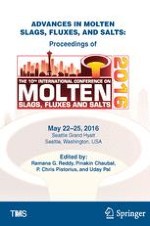2016 | Buch
Advances in Molten Slags, Fluxes, and Salts: Proceedings of the 10th International Conference on Molten Slags, Fluxes and Salts 2016
herausgegeben von: Ramana G. Reddy, Pinakin Chaubal, P. Chris Pistorius, Uday Pal
Verlag: Springer International Publishing
